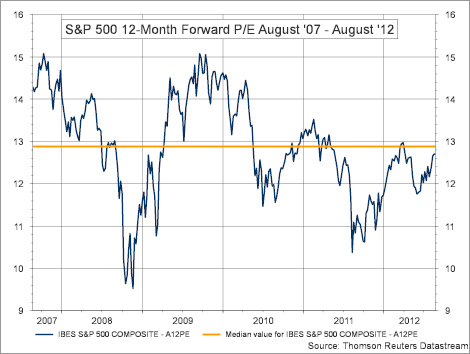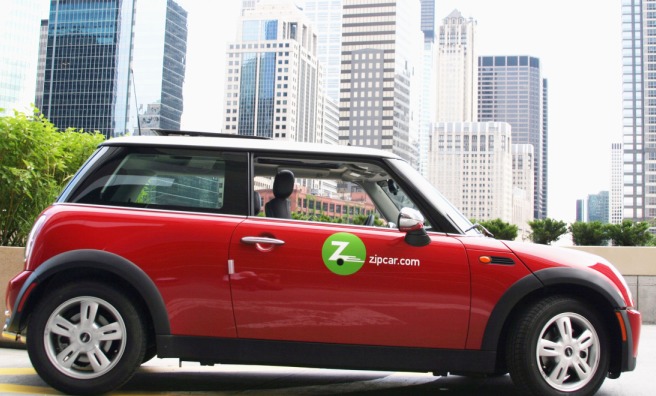by Michael Tarsala
The S&P 500 does not look expensive based on the forward valuation that many investors are used to seeing, but it’s getting close based on the “new normal”.
Bill Gross at PIMCO famously argues that the “new normal” nominal stock return is going to be in the 4 to 6% percent range, as little as half the 8 to 10% returns range that investors have seen over the past century. He says that the “cult of equity” is dying, and as a result, returns are going to be closer to economic growth rates going forward.
Forward PE ratios also are making a major adjustment lower, argues my former colleague John Kozey, equity analyst at Thomson Reuters, as investors are no longer willing to pay up for a stream of corporate earnings the way they had in the past.
Many bullish analysts cite an average S&P 500 valuation of 15 times forward earnings. It’s a number that is heavily skewed by the bubble years of 1995 to 2000. Kozey thinks that 15 times earnings is now an exception, not a rule. The “new normal” forward PE for the S&P 500 should be about 13 times, he says.
There are two strong data points to back up his assumption:

Source: AlphaNow blog
First, as Kozey shows above, the median forward PE over the past five years is 12.9 (or 13 with just a little rounding). Valuations did get back to a 15 forward PE in late 2007 and again in late 2009, but they could not stay there for very long at all.
Second, a 13 multiple could be just-plain normal if you look back far enough. David Kostin at Goldman Sachs is credited with researching forward PEs back to when they were first calculated in 1976. He came up with a median of 12.8 times — awfully close to Kozey’s new normal valuation.
What the forward PE research suggests is that the S&P 500 is pretty much trading at a historically normal multiple. Stocks are not overpriced, but the big earnings discount the market enjoyed for much of the year is now over.



